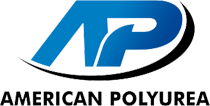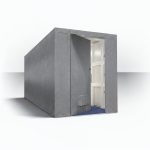On paper, polyurea seems simple. It sprays fast, cures fast, and protects almost anything—from steel to concrete, roofs to bridges. But what looks seamless in a product sheet often turns into something very different on-site. Polyurea works best when the job is planned around its behavior, not when it’s forced to adapt at the last minute. And that’s where many applicators find themselves stuck—solving problems that didn’t need to exist if someone had brought them in sooner.
The Disconnect Between the Spec and the Spray
Architects work at a high level. They juggle design intent, code compliance, cost constraints, and client input. When polyurea shows up in their spec sheets, it’s usually as a solution—waterproof this, seal that, reinforce those stairs. But polyurea is not paint. It doesn’t work on every surface or in every condition. And yet, the specs often treat it as though it does.
Applicators arrive to find substrate inconsistencies, moisture levels that exceed tolerance, or incompatible primers already applied. Some specs call for topcoats that reduce flexibility, or detail work that creates thin edges where cracking is likely. These are not small issues. A bad edge or a poor bond means a failed system. But the design documents rarely reflect that reality.
Polyurea Isn’t Flexible If the Conditions Aren’t Right
One of the biggest misconceptions about polyurea is that it’s endlessly forgiving. That assumption leads to details that ignore slope, movement, or structural limitations. A flat deck with no drainage? Polyurea won’t make the water disappear. A concrete wall with sealed cracks and zero surface prep? The coating won’t fix that either.
Polyurea cures within seconds. It bonds to what’s there—good or bad. It won’t smooth out a poorly leveled surface. It won’t correct slope. And it won’t tolerate movement without the right joint details in place. Applicators can spot these issues early. But when they’re brought in late, they can only do damage control.
Surface Prep Is Half the Battle—And Often Overlooked
A polyurea coating succeeds or fails based on what’s underneath. Architects may note “surface to be prepared per manufacturer’s instructions,” but the actual surface conditions are rarely confirmed. If the concrete wasn’t shot-blasted or abraded, if the steel still carries mill scale or old coatings, the polyurea won’t bond properly.
And when it doesn’t bond, failure doesn’t happen all at once. It shows up months later—bubbles, delamination, water intrusion. The blame rarely lands on the prep line in the spec. It lands on the applicator. But the problem started long before the sprayer was turned on.
Job Site Realities vs. Drawing Board Expectations
Most specs are built in clean conditions. The real world doesn’t match. Rain delays work. Wind pushes overspray. Temperatures shift hour to hour. And some substrates aren’t what the plans say they are. A steel beam drawn as coated may be bare. A floor noted as dry may still be curing. Applicators adapt when they can—but only if they’re allowed to adjust the plan or pause the work.
Rigid adherence to specs without real-time field adjustments often creates bigger problems. It costs more to redo a failed coating than to make a change mid-stream. Applicators aren’t trying to cut corners when they raise a red flag. They’re trying to prevent failure.
Polyurea Needs to Be Part of the Design, Not Tacked On
When architects design for polyurea from the start, the project benefits. Corners can be rounded. Joints can be shaped properly. Details can support the coating rather than work against it. But when polyurea is treated as a final layer—something to apply once everything else is done—it has to fight uphill.
Applicators can help bridge this gap. They know how coatings behave over time. They know where failures begin and how to stop them before they start. A quick conversation in the design phase can prevent costly fixes months after the building is occupied.
Specs Don’t Always Match Manufacturer Guidelines
Many polyurea specs blend language from multiple sources. Some pull in phrasing from older jobs, others list primers or topcoats that were never meant to work together. This creates confusion for applicators who are trying to do things right. One page says to use a vapor barrier; another omits it. One spec calls for 80 mils of polyurea, another says 40 mils is acceptable.
When these contradictions exist, applicators have to stop and ask for clarification. That pause can delay the project or trigger a change order. Clear, consistent specs prevent that. But getting to clarity requires input from those who’ve sprayed thousands of square feet—not just those reading datasheets.
Applicators Bring Knowledge That Doesn’t Fit on a Drawing
Polyurea doesn’t fail because of its chemistry. It fails because the environment, prep, or substrate didn’t support it. Applicators learn this through experience—through jobs that peeled, cracked, or bubbled because something small was missed. That knowledge doesn’t come from a textbook. It comes from standing behind the spray gun, day after day.
What applicators want isn’t control—they want input. They want to walk the job early. They want to mark where things won’t work. They want to save the project before it needs saving. They don’t want to be the last ones in, asked to coat a surface that was never ready for it.
Collaboration Is a Better Investment Than Rework
When applicators and architects talk early, both sides benefit. The design improves. The coating performs better. And the client doesn’t get stuck paying for repairs. Companies like ArmorThane have shown how applicator support leads to better results, and platforms like Polyurea Magazine and the American Polyurea Organization continue to publish resources that support this kind of field-first thinking. Polyurea Nation has also helped normalize these conversations by highlighting how experienced crews handle real challenges on-site.
The Finish Holds When the Process Is Right
Polyurea remains one of the most reliable coatings on the market—when used correctly. It doesn’t require perfection, but it does demand preparation. When architects invite applicators to the table early, that preparation becomes a shared effort. And when that happens, the coating lasts, the work holds, and the job gets remembered for how well it was built, not how often it had to be fixed.






